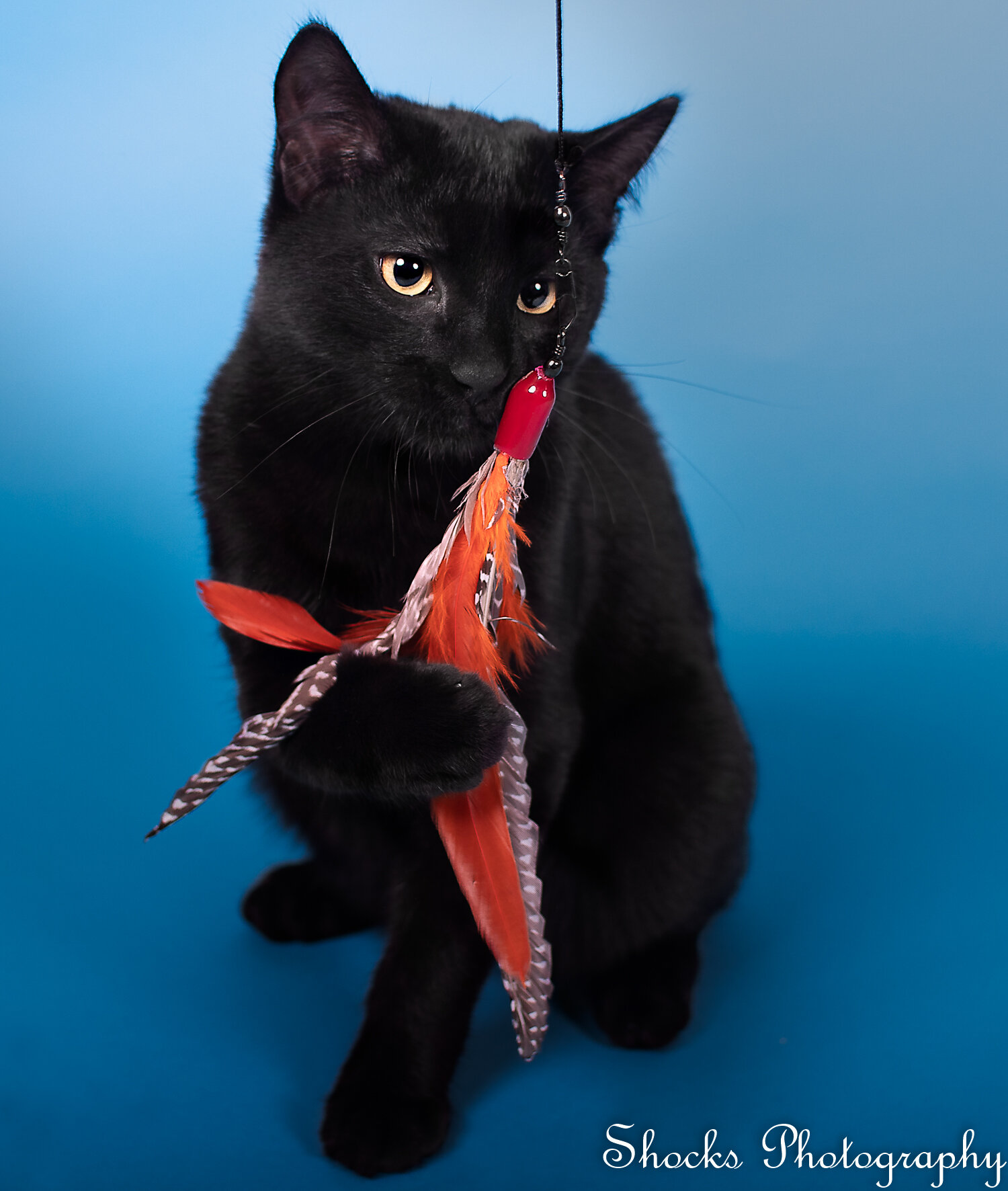8 Tips for Taking Purrfect Pictures of Cats
As cat owners, we love our beautiful babies and want to capture their unique quirks, so we can cherish those memories forever.
I want to give cat owners and beginner photographers a couple of tips I've found very useful for photographing cats.
1. Use a Fast Shutter Speed
Cats are really fast, so having a shutter speed that will keep up with them is the most important part of capturing a cat's photo. In articles I've read in the past, photographers loved recommending shutter speeds...but I never found this practical. I don't know your equipment or all the lighting situations you'll be in; just play around and be patient.
Using a faster shutter speed will require you to take your camera off auto mode, and switch to a semi-automatic mode or manual mode.
I prefer to use manual mode, because it allows me to make all the decisions for my shutter speed, exposure, and aperture. As a photographer, I want to create my image; I don't want my camera to make the decisions for me.
However, if you're not ready for manual mode, I know shutter priority mode works well, and other photographers really like aperture mode. Play around with all three and figure out which one works best for you.
2. High Continuous Shutter
Changing my camera to high continuous shutter was the biggest game changer for my cat (and dog) images. Doing this means your camera will take several photographs in quick session when you press the shutter, which is extremely helpful when photographing cats.
3. Lighting
Having good lighting is very important for cat photography. We need our lighting to be very bright, so we can have a fast shutter speed. Using natural window light is the most recommended, and use it whenever possible.
For the times you can't use window light, I would invest in a hot shoe flash or a continuous light. If you have the money, get the continuous light. There's no flash of light, so it's safe for kitten's eyes and it won't scare them. However, if you're on a budget, a hot shoe flash will work, but never have it directed at the cat's eyes, so you'll need to get one that can rotate.
4. Get on the Cat's Level
A lot of cat photos are taken from above since we're much taller than our adorable pets. Photographing the cat at their level brings the viewer closer to them. It will also have more impact on the viewer and it shows off the cat's personality better.
With cats this doesn't always mean you'll have to be on the floor, since they like to climb, you could use this to your advantage.
5. Keep Them Engaged
Cats aren't as easy to keep engaged in a photoshoot as dogs, if they get bored, they will not hesitate to walk away from you.
Knowing the cat's personality is the key to keeping them engaged. Does the cat have a favorite toy or treat? Where's their favorite spot in the house? Do they want a lot of love? Would they rather chase or hunt the toy?
If you're a pet photographer meeting a new cat, I suggest taking time to get to know the cat before photographing them. Talk to the owner; interact with the cat without the camera. Get to know them first, and you'll know how to keep them engaged. Every cat will be different, so I can't tell you what they'll need to keep them engaged.
6. Focus on Their Eyes
Cats have very expressive eyes, so keeping them in focus when photographing them is crucial. I know accidents happen. Our cameras like to focus on animal's noses rather than their eyes, so this is something you need to be aware of at all times when photographing all animals.
7. Be Patient
Cats are independent and stubborn...and we adore them for it, but it's also what makes them a challenge to photograph. Be patient with them, learn their personality, get them engaged, and playing. Sometimes getting the right photograph means putting your camera down for a little bit.
8. Practice
Photographing cats isn't something you can watch a YouTube video on and just do. It takes a lot practice. You have to get the timing down right, know your camera very well, know how to keep each cat engaged, know what to do in different lighting situations, and so much more. Practice on your cat or volunteer for an animal shelter. There are so many shelters who would love the help. You'll be able to learn and interact with A LOT of different cats.







